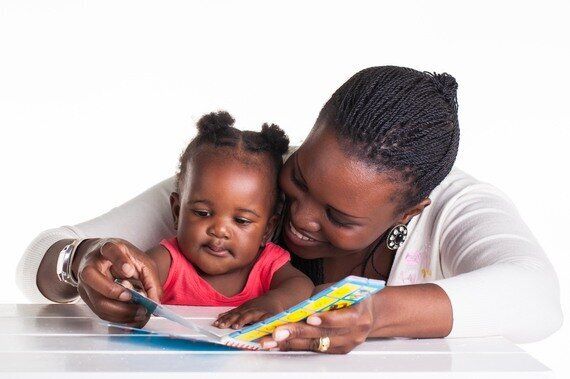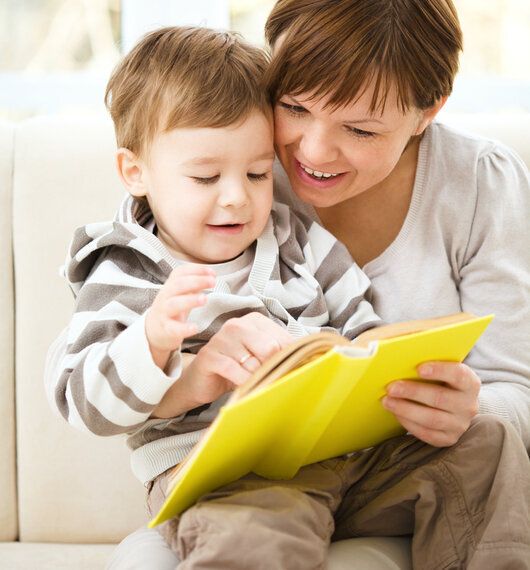
Photo sourced from Shutterstock
As a parent, there are so many things to think about and reading with your child shouldn't ever feel like a chore.
As a mum who has put her own child through nursery, and as a childcare practitioner for over 15 years, I understand how busy life as a parent can be and it's not always possible to read every day with your child. However, it has been proven that children who are read to at an early age are more likely to excel with their numeracy, literacy and language skills as they get older.
Therefore, I wanted to share with you some top tips to help children in their early years (age 0 - 5) develop key literacy, numeracy and communication skills and I hope that you find them useful to incorporate into your own story time at home:
1.Create an ideal reading space
If you can create a cosy space for story time, this will help you to remember to make time for reading each day. The space need not be complex, just ensure the corner or area is comfortable for you and your child so that they can easily see the pictures and handle the book. Allow your child to choose a favourite or share a story that you love.
2.The earlier, the better
There are multiple benefits to reading to your children even when they're very young babies! They may not understand the words but hearing your voice is not only soothing but will help your baby develop listening skills and stimulates an interest in sounds. Choose touchy-feely books where possible too as they are ideal for helping your baby develop fine motor skills.

Photo sourced from Shutterstock
3.Don't be afraid to be silly!
Children can pick up on body language and emotions from a young age so if you're bored or sound frustrated, the story will lose its impact. Storytelling is all about using your enthusiasm and energy to make it magical. But most of all, make reading fun!
4.Rhyming
Rhyming helps children understand how language works and how there are different sounds within words. Some great rhyming stories include The Gruffalo or Each Peach Pear Plum - they help give an understanding of pattern, rhythm and understanding that words have common sounds.
5.What's going to happen next?
Add an element of surprise by prompting your child to guess what might happen next in the story. Engaging them in higher level thinking and problem solving, by asking them what's already happened in the story or what happens next, are important skills for developing mathematical thinking.

Photo sourced from Shutterstock
6.Create curiosity
Ask your child open ended questions such as: "What do you think would happen if the three bears had gone to Goldilocks' house?". Avoid obvious questions such as: "What colour is the bus?". Open ended questions not only support a child's critical thinking, but helps boost self-esteem and social skills. They encourage children to provide answers that they've thought-out and to further engage in the story.
7.Tell your own story
You can use the front cover or individual pages to ask your child how they think the story might develop. This encourages them to use their imagination and sparks curiosity and excitement about what is coming next. This helps a child to use context clues from pictures.
8.Understanding values and morals
Most books for children carry a moral theme or characters that are experiencing certain emotions that children can relate to. Reflecting on these themes and asking children questions about how they would feel if they were in the character's shoes can help them develop an understanding of language for emotion e.g. try asking: "How would you feel if someone stole your porridge?" or,"Why do you think the monkey is feeling sad?".
9.Use props
Props can be as simple as a child holding their teddy bear when reading a story such as That's Not My Bear. Or try creating puppets simply made from lolly sticks / paper plates / wooden spoons - the possibilities are endless!

Photo sourced from Shutterstock
10.The language of books
Familiarise your child with the book itself so they can understand the format and how they're formed. Point out which part is the front cover, who the author is, illustrator and explain the purpose of the blurb. It may come naturally to most parents and seems obvious, but following the words with your finger helps a child understand that words printed on a page carry meaning when we read from left to right.
For parents looking for more ideas and tips for reading to their child in the early years, they can download this free guide or visit the campaign landing page
Lisa Snell is an Early Years Director at Busy Bees, the UK's largest provider of quality childcare